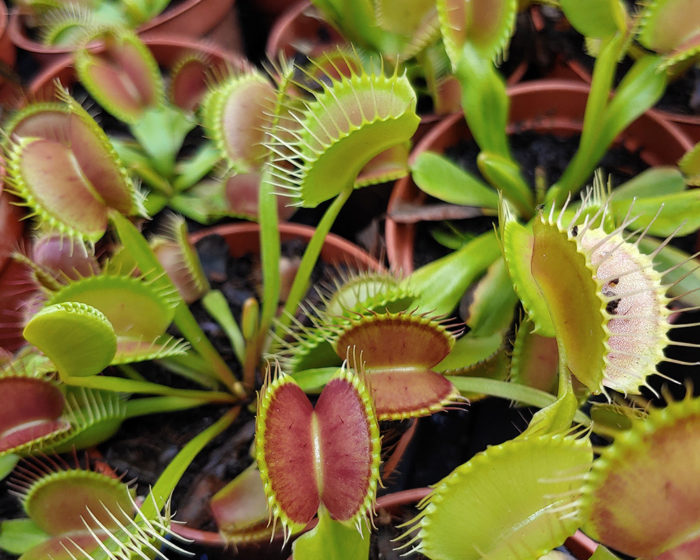
We gardeners love our plants, and we relish seeing (and fanning) the flames of plant passion burning in others. There comes a time in many kids’ lives when one particular plant sparks a powerful desire. Typically that plant is the infamous Venus flytrap (Dionaea muscipula, Zones 6–9). Venus flytraps are living proof that the world is full of expectation-defying possibilities. “Humble plant turns the tables on the animal kingdom” makes for a hot headline, like analog clickbait. The idea of growing your own little shop of horrors must satisfy something more universal than we care to admit.
If your inner child comes bursting out when passing by a carnivorous plant display, only to be followed by your inner parent repeating, “It’s just gonna die—it’s an exotic, picky plant,” I’m here to talk back. Venus flytraps are completely growable in the Southeast, and summer is the perfect time to indulge would-be savage gardeners, young and seasoned alike.
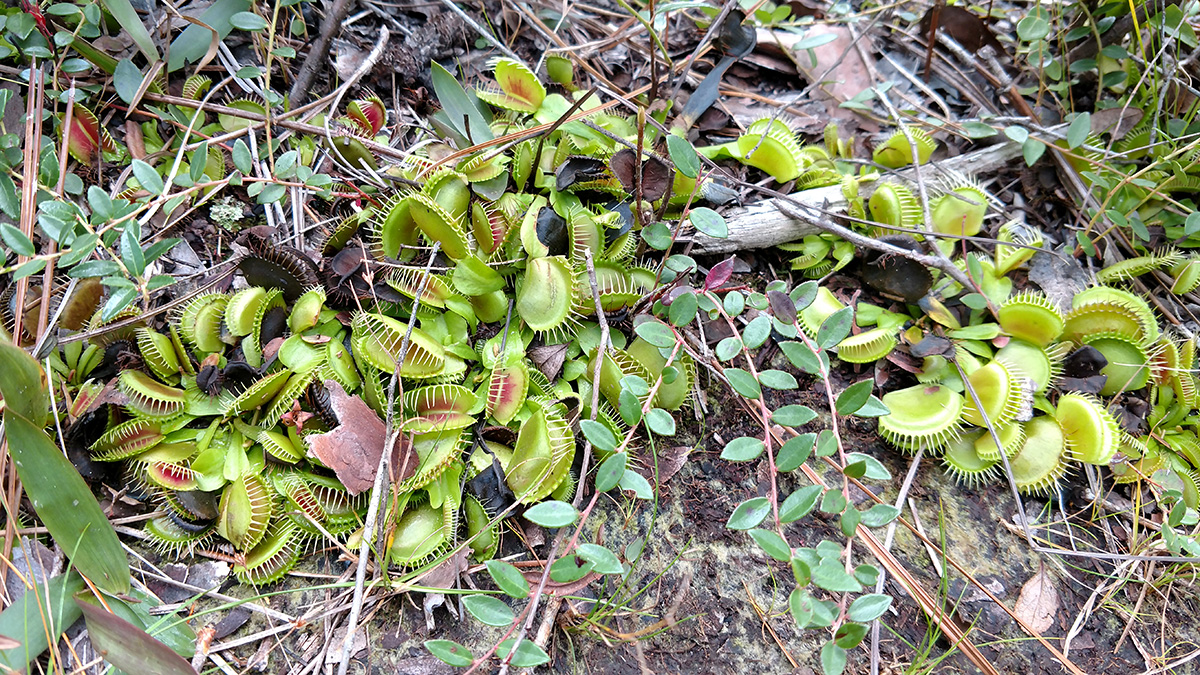
Don’t be fooled by its otherworldly name; Venus flytrap is a native plant! In fact, it is native only to a small area of the U.S. Southeast—in wet pine savannas and bogs from the Green Swamp Preserve in North Carolina down into a bit of South Carolina. Ever walked around a swampy pine savanna? Such places hold all the clues to successfully growing flytraps and other native carnivorous plants, such as pitcher plants (Sarracenia spp. and cvs., Zones 6–9) and sundews (Drosera spp. and cvs., Zones 6–9). Good light, a peaty-sandy soil, and constant moisture at their roots are the keys to happy insect-trapping native flytraps.
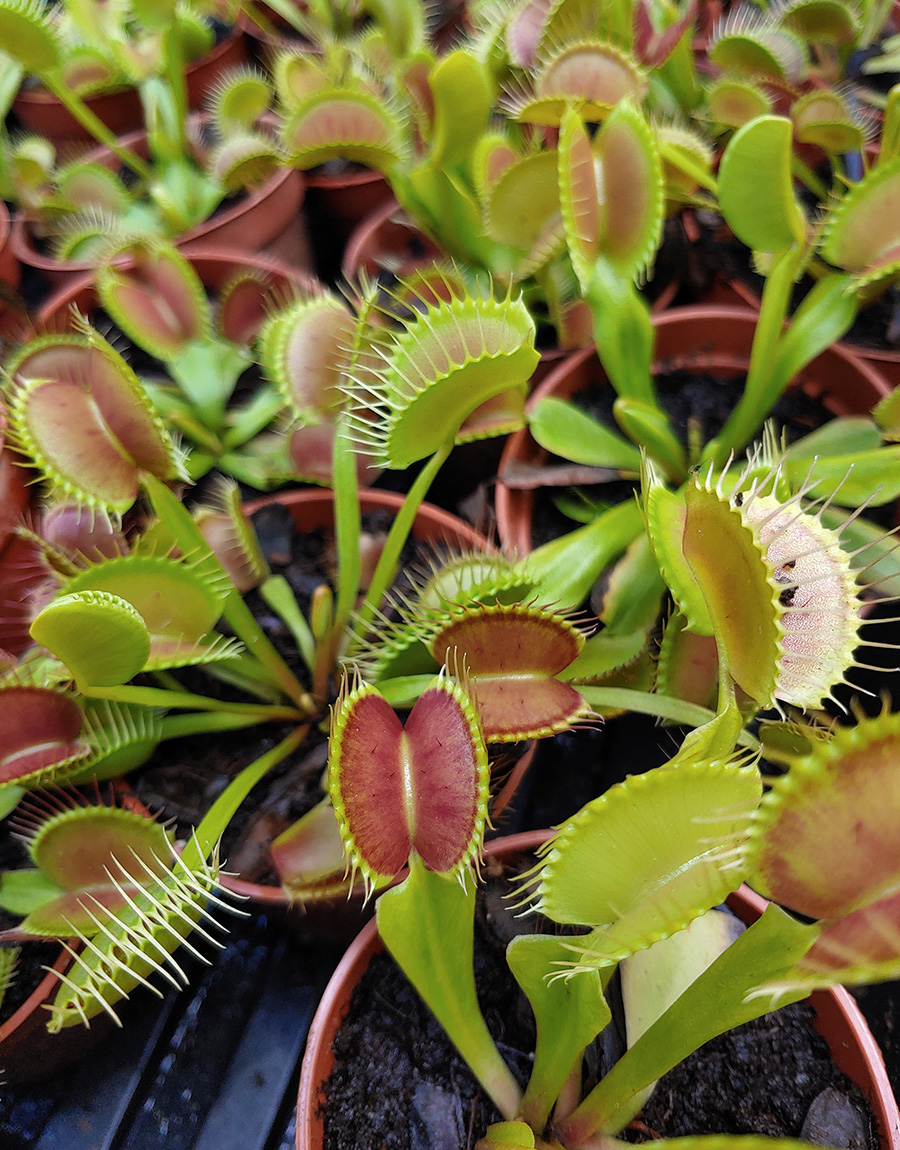
Steps to Success
1. Pick healthy plants. Your local garden center may carry carnivorous plants, but make sure they are being grown in decent light and with adequate moisture, and that they appear sturdy. If you have the option of examining their roots, look for half an inch of long white tips. The majority of each root is dark, but the light tip shows it is growing. Plants may also be ordered from reputable nurseries, such as Flytrap King. Other options are listed on the webpage of carnivorous plant guru, Barry Rice.
2. Choose the right container. Pick a container to fit the size of your plant. It must have drainage holes. A 3-to-4-inch-diameter container is appropriate for one flytrap. If you’re going all in and creating a mixed planting that includes pitcher plants, choose something that is at least 9 inches in diameter and more shallow than deep. If your container doesn’t come with a saucer, you can repurpose other trays that will hold a couple inches of water. Don’t be tempted to use that adorable pot without drainage holes; the movement of water is very important for the health of these plants.
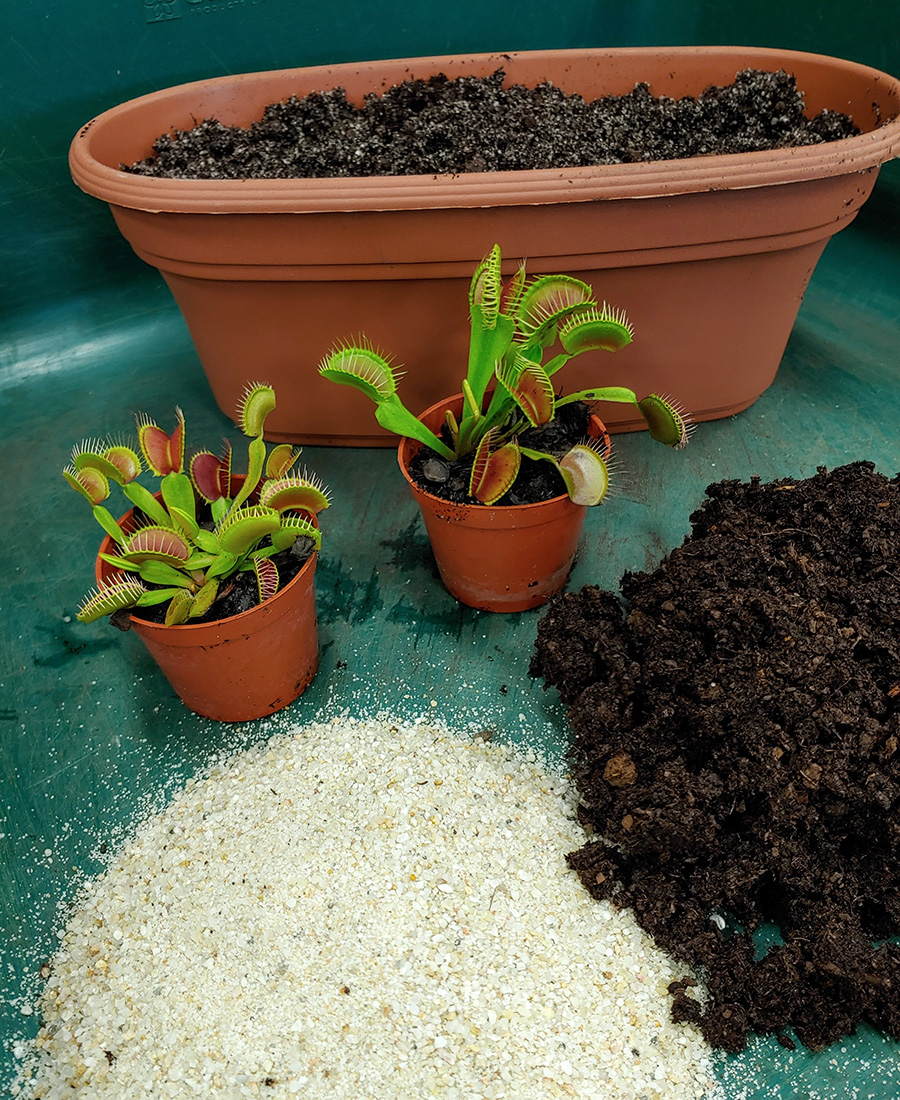
3. Create the perfect soil mixture. Fill your container 3/4 of the way full with an appropriate soil mix. I use a 50-50 mixture of moistened peat moss and coarse sand. Pool filter sand is perfect, but washed, coarse play sand will do. Another good option is a mix of 2 parts peat to 1 part perlite. Sprinkle a layer of sand on top if you don’t like the look of the perlite. Pure peat works in a pinch and is likely what the flytraps you buy will be potted in.
4. Plant and water. Unpot your plants, and gently work the media away until you expose most of the roots. Plant so that the crown is neither buried nor above soil level. Firm the soil around the plant, and then water in deeply. Fill your saucer with water. Rainwater (from a rain barrel or collected in a bucket) is the best, but I have used city tap water without issue. Well water is not recommended due to its high content of dissolved solids.
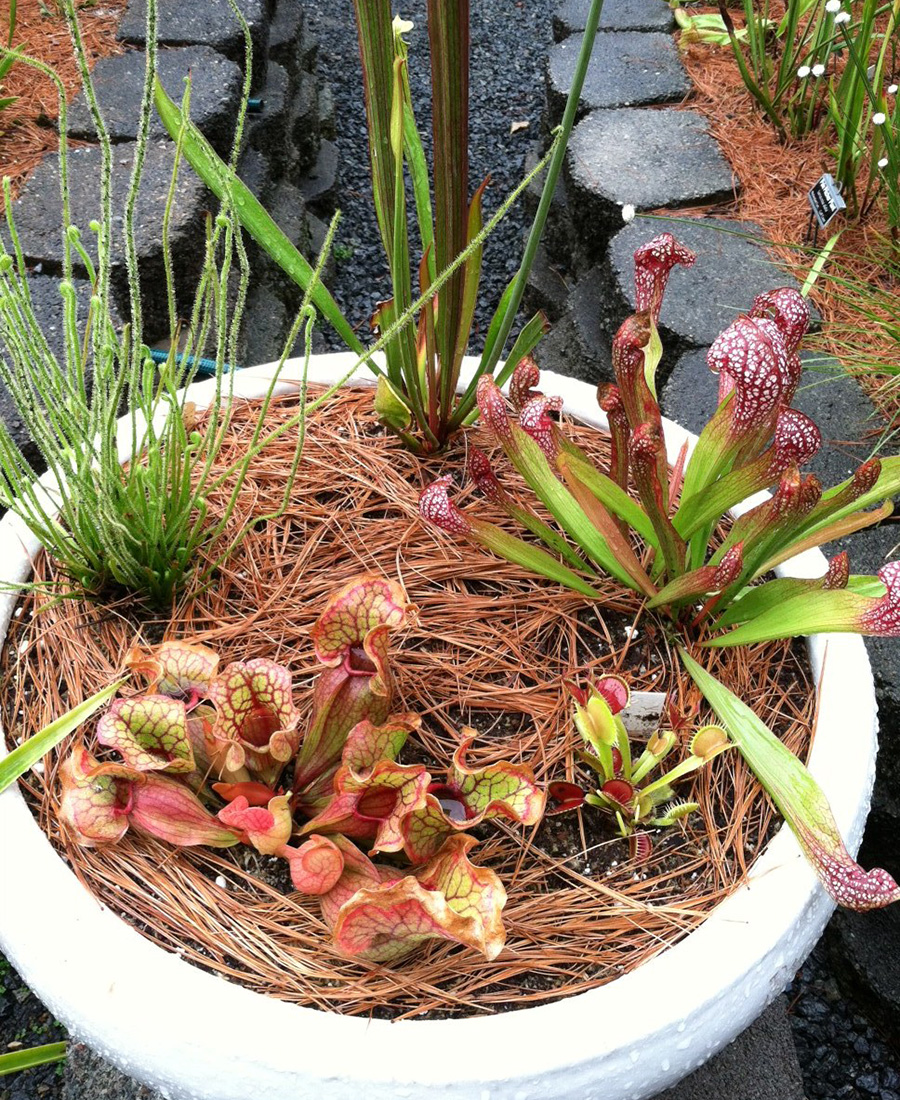
5. Site correctly. Place your container outdoors in a mostly sunny spot that you frequent—you won’t want to miss the sideshow. This spot should get at least 6 hours of sun a day. Flytrap leaves are at their deadliest in the heat of summer and will trap whatever is large enough to trip their trigger hairs and small enough to fit between the green walls of their prison traps. Traps stay shut for a week or more while digestive enzymes break down prey into juicy goodness and leaves absorb their nutrients. When the traps reopen, you can play forensic entomologist and identify prey by the carnage of wings and shells that remain.
The need these plants have of always staying moist is probably what has led to their undeserved reputation of being picky. These are bog plants, not tropicals, so even a day or two of dry soil can be nearly fatal. If you’re a serial overwaterer, this is the plant for you! For the rest of us, a deeper saucer, kept filled with water, is insurance against a day or two of forgetfulness.
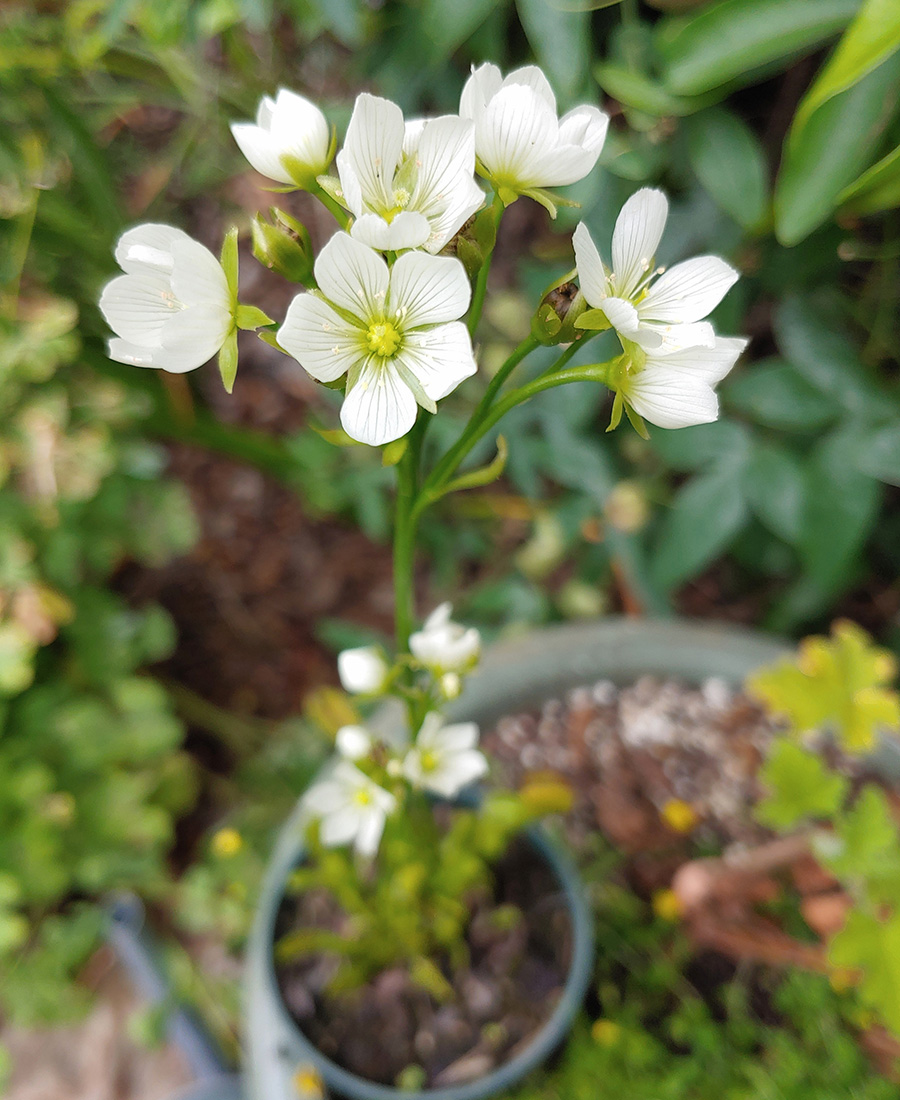
Frequently Asked Questions
Venus flytraps produce flowers? That’s right. These are flowering plants, and the seeds have to come from somewhere. Loose clusters of white flowers appear on tall stalks in June and may be cut back when they are finished blooming.
Do I bring my plant indoors in the winter? It depends on the size of your container. These plants naturally experience a winter dormancy; they need one to grow well for the long term. However, a 3-inch container will freeze more often than plants in their native soil, so you may choose to bring small containers into an unheated garage or sunroom in December and back out in March (in Zones 7–8) or insulate them. Even though the plants will be dormant, water them every 3 to 4 weeks to be sure roots don’t dry out. Larger containers may spend the winter outdoors.
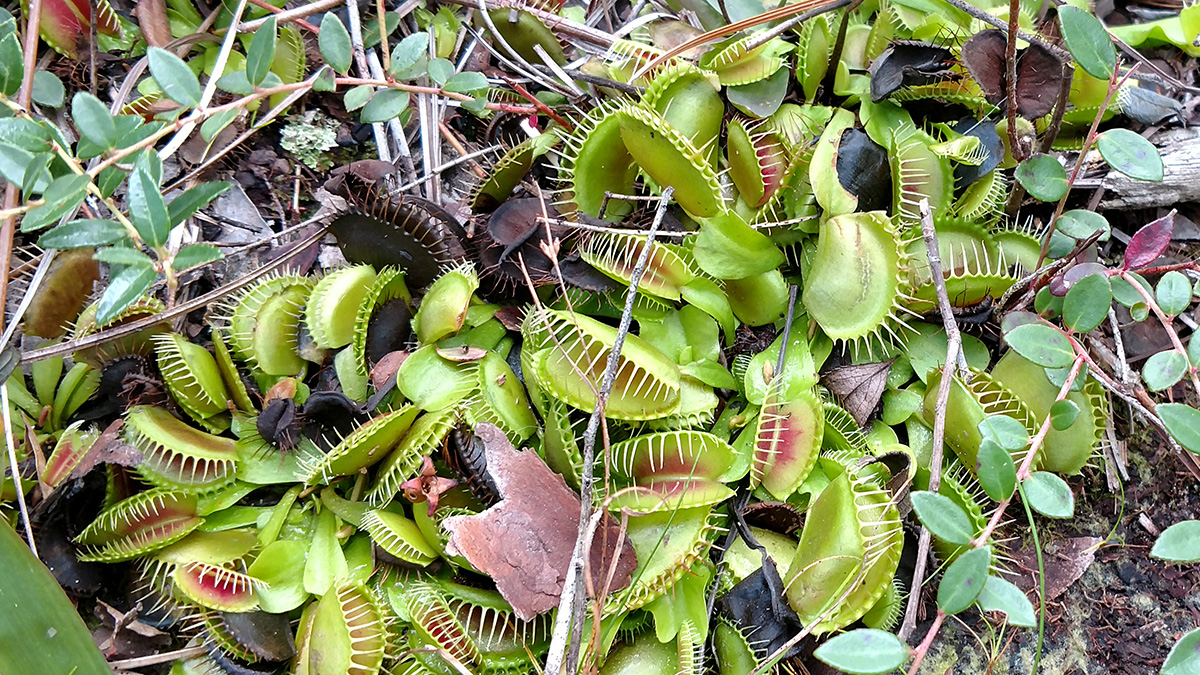
Why are some of my traps turning black and dying? Not to worry; this is normal. Individual leaves (traps) don’t last a whole season but are replaced by new leaves emerging from the center of the rosettes.
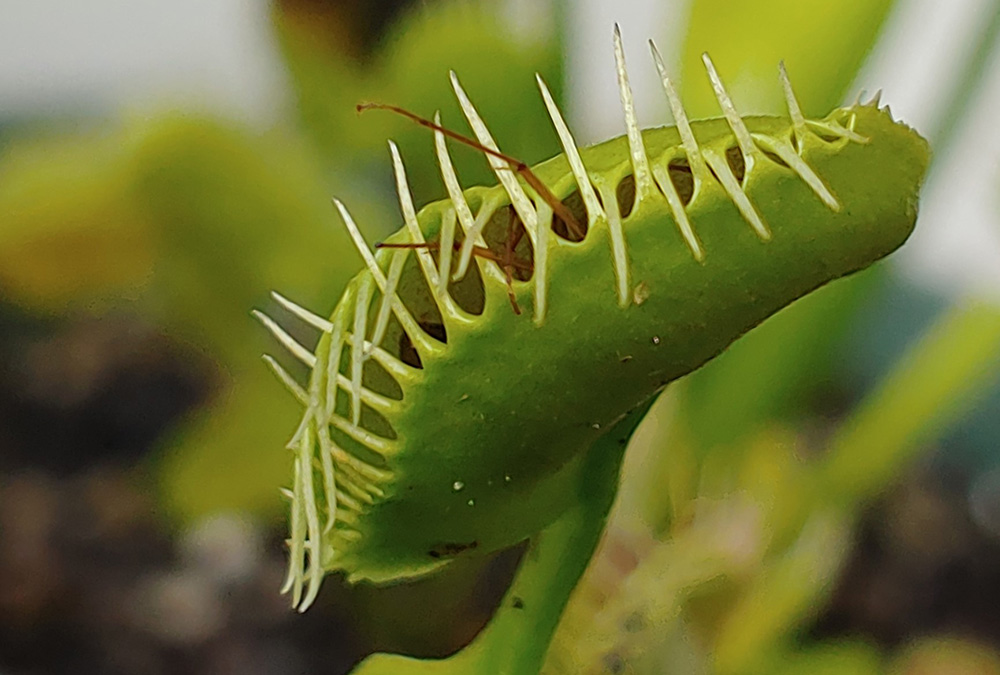
Can I feed it hamburger? Come on now, y’all are better than that. If you want to see them snap, give them the good stuff—insects. Catch a fly, daddy longlegs, large ant, or the like. They are pretty good at catching their own prey, though, so it’s perfectly fine to ignore any faint cries of “Feed me” coming from the back deck.
—Paula Gross is the former assistant director of the University of North Carolina at Charlotte Botanical Gardens.


















Comments
Log in or create an account to post a comment.
Sign up Log in